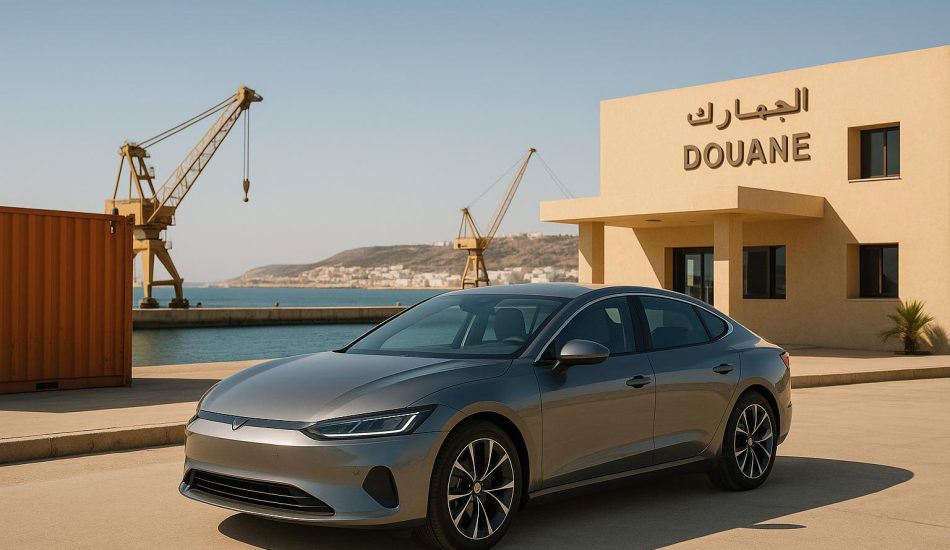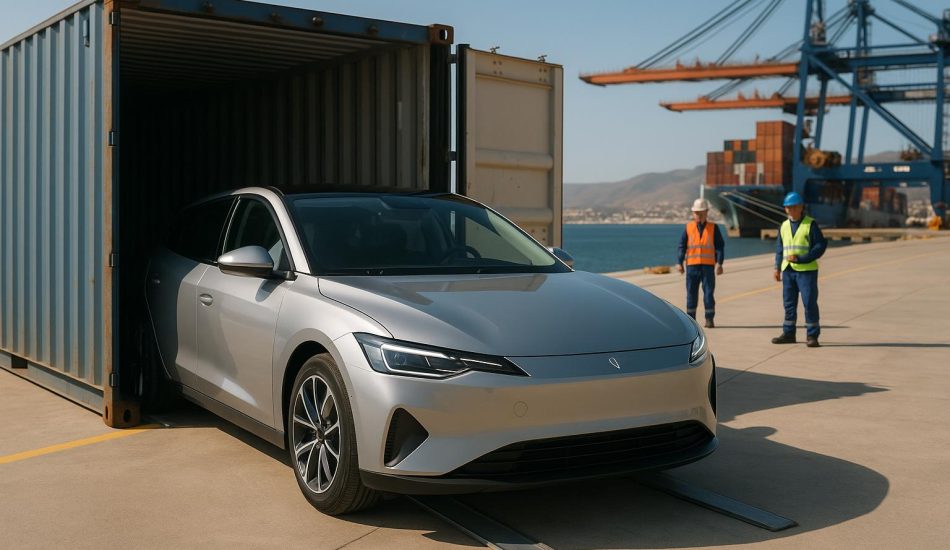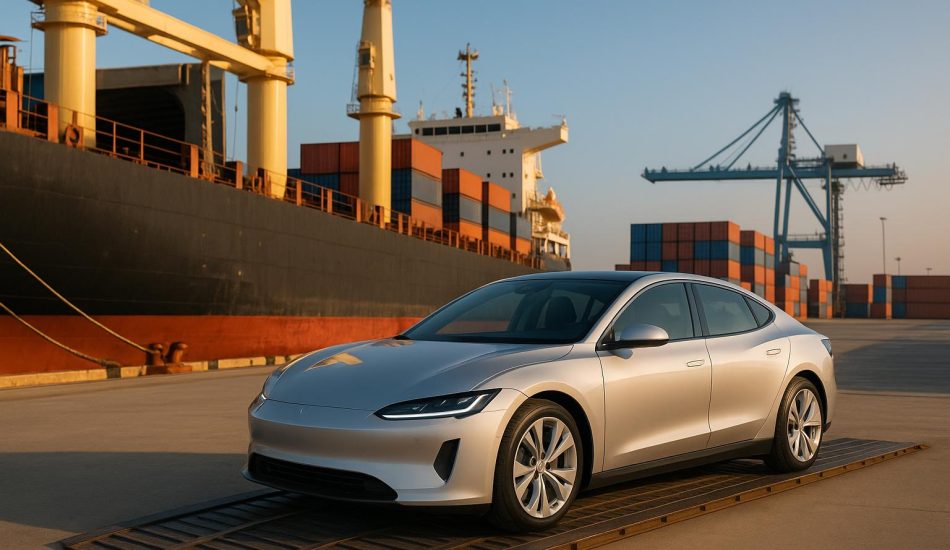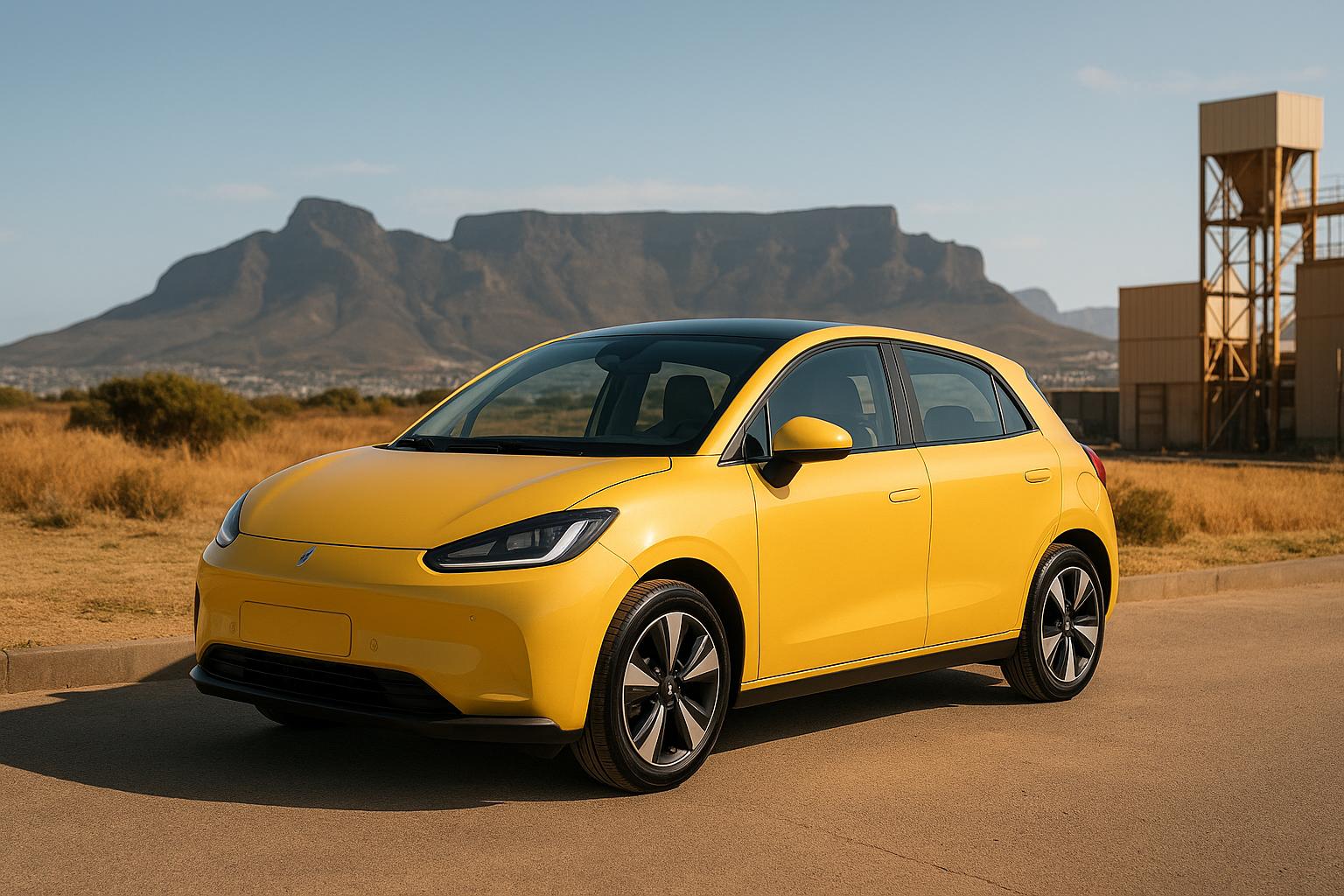
Stellantis, a global automaker, has partnered with Chinese EV manufacturer Leapmotor to launch affordable electric vehicles in South Africa. Starting September, the Leapmotor C10 will be available in two versions: a fully electric model (BEV) and a range-extended version (REEV) that includes a small gasoline generator to address charging infrastructure challenges. This move aims to make EVs more accessible amidst rising fuel costs and growing interest in cleaner transportation. Stellantis plans to expand the lineup in 2026 with more models, including entry-level cars and SUVs, while leveraging its extensive dealership network and exploring local assembly to reduce costs and create jobs.
Key Highlights:
- C10 Models: BEV for urban areas; REEV for longer trips or areas with fewer chargers.
- Features: Smartphone-compatible infotainment, spacious interior, advanced safety tech.
- Local Impact: Potential for job creation and reduced import costs through local assembly.
- Future Plans: More models arriving in 2026.
This collaboration could reshape South Africa’s EV market by addressing affordability and range concerns while supporting the transition to cleaner energy.
Leapmotor C10 REEV (2025) First drive review
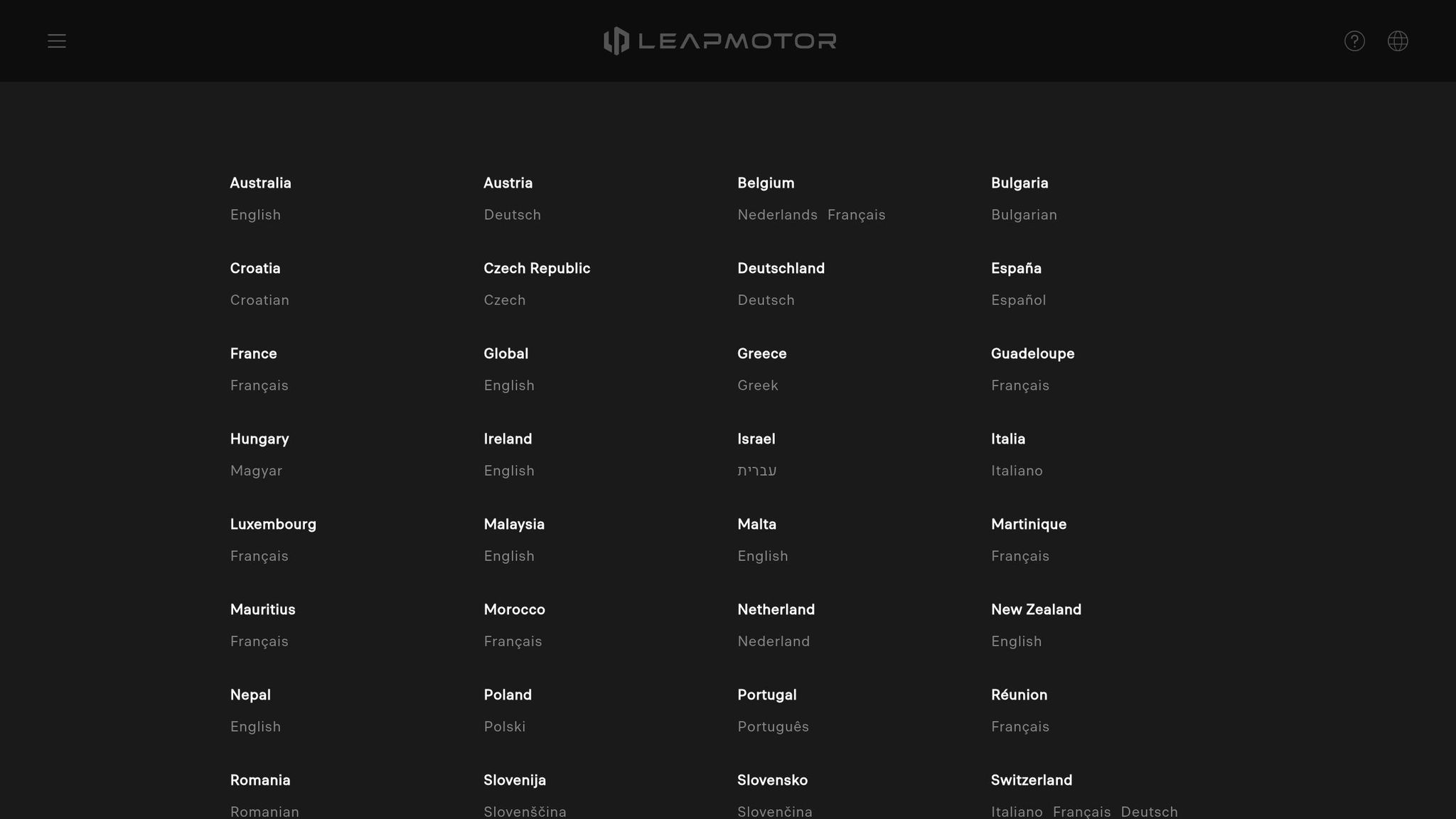
Leapmotor Models Coming to South Africa
Stellantis is preparing to introduce the Leapmotor C10 as its flagship model in South Africa, with plans for additional models to follow in 2026. This launch aims to provide affordable electric mobility tailored to the unique needs of the local market. Here’s what you need to know about the C10 and the future lineup.
C10 REEV: The Core Model
At the heart of the launch is the Leapmotor C10 REEV (Range-Extended Electric Vehicle), a mid-size SUV that combines electric power with a compact gasoline generator. This dual system helps alleviate concerns about range and addresses the challenges posed by limited charging infrastructure in rural and less developed areas.
The C10 REEV comes packed with features, including a smartphone-compatible infotainment system and a spacious, family-friendly interior. It also incorporates advanced driver assistance technologies designed to improve safety and convenience on the road.
C10 Model Options: BEV vs. REEV
The Leapmotor C10 will be available in two configurations: a pure battery-electric vehicle (BEV) and a range-extended electric vehicle (REEV). This dual offering gives buyers the freedom to choose based on their driving habits and access to charging facilities.
- The BEV model is ideal for city dwellers and areas with reliable charging networks.
- The REEV model suits those who need the flexibility for longer trips or live in regions where charging infrastructure is still developing.
| Feature | C10 BEV | C10 REEV |
|---|---|---|
| Electric Range | Designed for typical urban use | Matches BEV range, with added generator support |
| Total Range | Limited to battery capacity | Extended with a gasoline generator |
| Battery Capacity | Optimized for daily urban driving | Same battery, with extended range capability |
| Charging Speed | Fast-charging available | Fast-charging available |
| Best For | Urban areas with strong charging access | Longer journeys and areas with fewer chargers |
More Models Arriving in 2026
The Leapmotor lineup will expand in 2026 with the introduction of additional models, including an entry-level city car and more SUVs. These new vehicles will cater to a broad spectrum of needs, from efficient urban commuting to premium SUV options.
This planned expansion highlights Stellantis’ ambition to position Leapmotor as a major player in South Africa’s growing electric vehicle market. By addressing a variety of consumer needs and driving conditions, the brand aims to make electric mobility more accessible and practical for South African drivers.
Technology and Features
Leapmotor EVs introduce a clever solution to the challenge of limited charging infrastructure with their Range-Extended Electric Vehicle (REEV) technology. This system sets the C10 apart, especially in regions where charging networks are still catching up.
Range-Extended Electric Vehicle (REEV) Technology
The REEV system integrates a small gasoline engine that recharges the battery while driving. This ensures the vehicle maintains a fully electric drive without drivers having to worry about running out of power. By eliminating the immediate need to find a charging station, this technology offers a practical and convenient way to address range anxiety. It’s a clear step in Stellantis’ efforts to make electric mobility more accessible and dependable.
sbb-itb-99e19e3
Impact on South Africa’s EV Market
With a focus on cutting-edge technology and affordability, the launch of Leapmotor EVs through Stellantis could reshape South Africa’s electric vehicle landscape. These developments address key barriers to EV adoption and promise to accelerate the transition to cleaner transportation across the region.
Expanding EV Adoption
Stellantis brings a well-established dealership network that spans both urban hubs and remote areas in South Africa. By utilizing this network, the company can make EVs more accessible nationwide. A standout feature is the use of REEV (Range-Extended Electric Vehicle) technology, which helps alleviate range anxiety – a major concern in areas with limited charging infrastructure. This approach ensures that EVs can become a practical option even in regions where charging stations are scarce.
Boosting Local Manufacturing
Stellantis’s existing manufacturing facilities in South Africa open the door for local assembly of EVs. This move could significantly lower import duties and shipping costs while creating jobs and enhancing technical expertise. By involving South African workers in the assembly of electric vehicles and battery systems, the country could gain valuable hands-on experience with advanced technologies. This not only strengthens South Africa’s automotive sector but also aligns with its broader goals of economic growth and energy transition. Local production could also position South Africa as a key player in the regional EV market.
Aligning with South Africa’s Energy Goals
As South Africa shifts away from coal-powered energy, EV adoption plays a critical role in supporting cleaner energy initiatives and fostering economic growth. With increasing investments in solar and wind power, the environmental advantages of EVs are set to grow. REEV technology offers a practical bridge, enabling wider EV adoption even as the national grid transitions to greener energy sources. Corporate fleets aiming for sustainability are likely to find Leapmotor EVs appealing, which could, in turn, drive demand for charging infrastructure, renewable energy installations, and related services. These developments not only contribute to environmental progress but also stimulate economic activity in emerging energy sectors.
How to Buy Leapmotor EVs in South Africa
South Africa’s electric vehicle market is evolving, and Leapmotor is stepping in to offer exciting options. Here’s how you can purchase a Leapmotor EV, either through Stellantis’ dealership network or the online platform EV24.africa.
Stellantis Dealership Locations
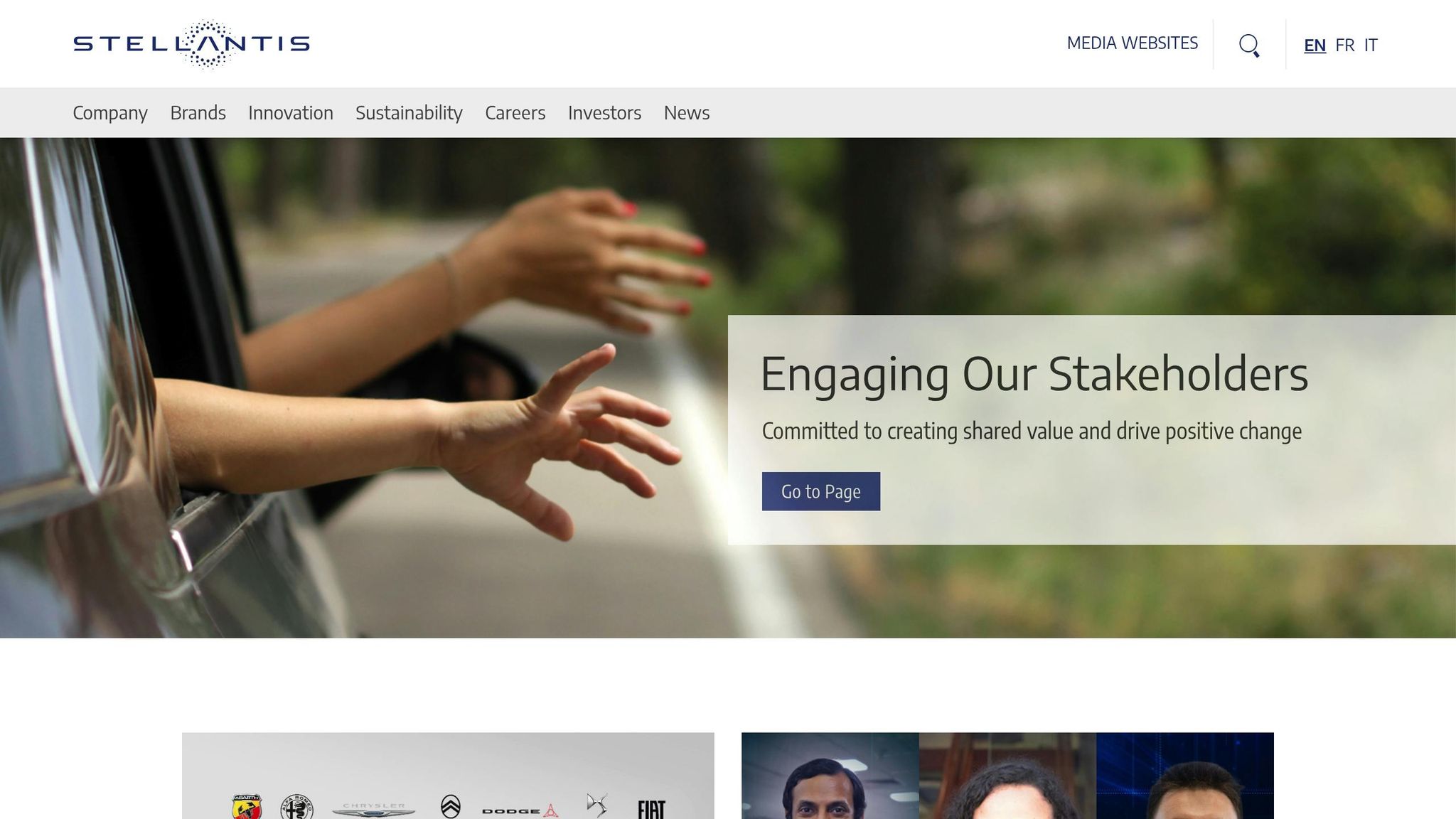
Leapmotor EVs are available through Stellantis’ extensive dealership network across South Africa. You can use the dealer locator tools on Stellantis brand websites – like Fiat, Jeep, Peugeot, or Opel – to find the nearest location. For instance, Opel operates 35 dealerships nationwide.
"Stellantis, which owns 20% of Leapmotor, will distribute the cars locally through its established dealership network." – BusinessTech
If you need assistance, you can visit your local dealership during business hours (Monday–Friday, 8:00 AM–5:00 PM). Stellantis South Africa’s operations are managed from their headquarters at Unit B0-001 & B1-001, Midrand Business Park, 563 Old Pretoria Road, Halfway House, 1685. Prefer to shop online? Stellantis also provides seamless digital options for exploring and purchasing Leapmotor EVs.
Online Purchase via EV24.africa
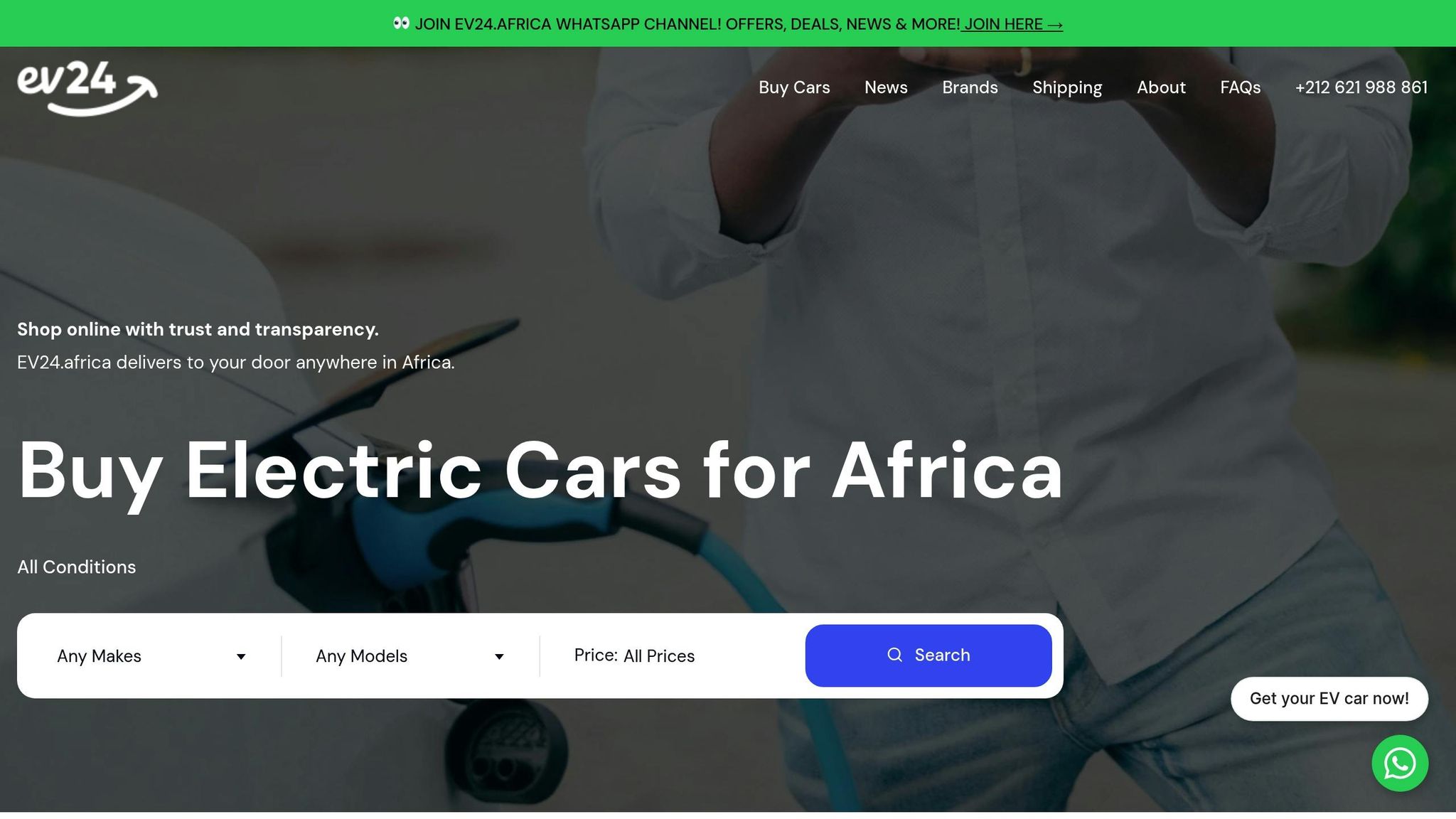
For those who prefer the convenience of online shopping, EV24.africa is a dedicated platform for electric vehicles. Here, you can browse Leapmotor models, compare specifications, and explore financing options. The platform also offers transparent pricing, customer reviews, and delivery services across South Africa, making it a convenient choice for buyers. Additionally, EV24.africa provides updates on future releases, ensuring you stay informed about the newest offerings.
When More Models Will Be Available
The first Leapmotor model, the C10 REEV, is expected to launch in mid-October 2025. Following this, more models will arrive in 2026, giving South African consumers a wider selection of electric vehicles. Stay tuned to Stellantis dealership updates and EV24.africa for announcements on new models and pre-order opportunities.
Conclusion
Main Points
Stellantis’ introduction of Leapmotor EVs into South Africa marks an important step in shaping the region’s electric vehicle market. With the launch of the C10 REEV this September, South African consumers now have access to an affordable electric mobility option that tackles range anxiety through its innovative REEV technology. This move aligns with South Africa’s clean energy ambitions and encourages broader adoption of electric vehicles.
Leapmotor’s approach to maintaining full control over its manufacturing process ensures consistent quality and competitive pricing. Coupled with Stellantis’ extensive nationwide network, these EVs become more accessible to consumers across the country. The combination of REEV technology and this distribution infrastructure makes these vehicles a practical option for South Africans working toward cleaner, more sustainable transportation.
The timing couldn’t be better, as South Africa continues efforts to diversify its energy sources and reduce reliance on fossil fuels. Leapmotor offers a viable solution, making electric vehicle ownership a more realistic option for everyday families.
This launch sets a strong foundation for what’s to come.
What’s Next
Looking ahead, the momentum is expected to grow with new Leapmotor models set to arrive in 2026, offering even more variety and accessibility to consumers. As the market develops, platforms like EV24.africa will play a crucial role in providing transparent pricing, financing options, and delivery services across all 54 African countries, helping drive the continent’s shift toward electric mobility.
The success of Leapmotor in South Africa could serve as a model for expansion into other African markets, potentially speeding up the adoption of electric vehicles across the region. As local manufacturing grows and charging infrastructure improves, South Africa has the potential to position itself as a hub for electric vehicle distribution and innovation, inspiring a wider transition to sustainable transportation throughout the continent.
FAQs
What’s the difference between the Leapmotor C10 BEV and REEV, and which one is best for your driving needs?
The Leapmotor C10 offers two electric-focused options tailored to different driving needs.
The C10 BEV (Battery Electric Vehicle) runs entirely on electricity, delivering a range of about 260 miles per charge. It’s a smart pick for drivers who want zero emissions, reduced running costs, and mainly stick to urban or suburban routes.
On the other hand, the C10 REEV (Range Extender Electric Vehicle) combines electric power with a small gas engine that acts as a generator. This setup boosts the total range to around 600 miles, making it a solid choice for long-distance travel or for drivers who might not have regular access to charging stations.
If your priority is eco-friendly commuting and shorter trips, the BEV is a strong contender. But if you need more flexibility and the ability to cover longer distances, the REEV might be the better option.
How will introducing Leapmotor EVs support South Africa’s energy goals and impact local jobs?
The arrival of Leapmotor EVs in South Africa marks a step forward in supporting the country’s energy goals. By promoting the adoption of electric vehicles, this shift can help reduce reliance on fossil fuels and cut emissions – especially when paired with renewable energy sources like solar power. It ties into the broader push for cleaner energy and greater efficiency.
Beyond environmental benefits, the rollout of these EVs is expected to boost local job creation in areas such as assembly, sales, and maintenance. While the shift toward electric mobility may initially impact traditional automotive roles, it opens the door to long-term economic growth and new opportunities for workforce development. This initiative not only advances electric mobility but also contributes to sustainable progress in South Africa.
What challenges and benefits come with introducing REEV technology in South Africa’s current EV charging network?
Introducing REEV (Range-Extended Electric Vehicle) technology to South Africa comes with its fair share of hurdles and opportunities. Among the challenges are the country’s limited charging infrastructure, fluctuating energy policies, and frequent electricity supply issues, all of which complicate traditional EV charging.
On the upside, REEVs bring notable advantages. By combining electric power with a range-extending engine, they ease range anxiety and allow drivers to travel longer distances without being entirely dependent on charging stations. This makes them especially practical in areas where the charging network is still underdeveloped, offering a much-needed alternative for early adopters of electric vehicles.
Despite the obstacles, REEVs could play a key role in pushing South Africa toward more sustainable transportation, serving as a practical solution while the EV ecosystem continues to evolve.


